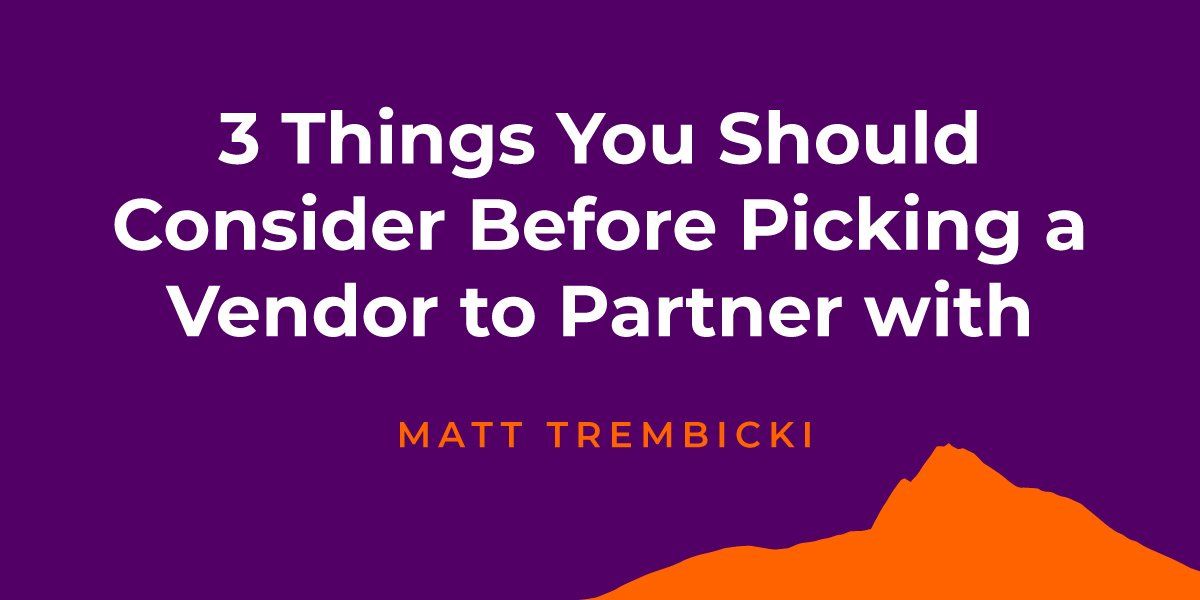3 Things You Should Consider Before Picking a Vendor to Partner with
Regardless of what type of business you’re in, you are likely to need vendor partnerships of some kind to help you meet your goals and stay on track. As your business’s success and reputation depend on these vendors coming through for you, it’s common sense that your choice of vendor is a significant decision.
The stakes are high, and the proverbial sea of vendors to choose from is vast. For this reason, even if you know exactly what type of service or product you need, picking the best vendor to partner with can be a daunting task. The good news is that you don’t have to allow the overwhelm to paralyze you, as we here at AMPlify are ready to help you navigate this path.
To start, here are three factors to consider when weighing your vendor partner options:
1. Shared Vision and Goals
The first—and perhaps most important—thing to ask yourself when choosing a vendor partner is: Are we on the same page? By this, I mean taking a good, hard look at yourself and your vendor and ensuring you are clear (and in consensus) about what exactly your goals and objectives are and how you will get there together. I cannot stress enough how vital seamless collaboration and synergy are in a vendor partnership.
Even though synergy has become quite the buzzword, it basically describes when two or more entities join forces to produce a combined outcome that is greater than the sum of its separate parts. You’ve all probably heard the adage “Two heads are better than one,” and this describes the aim of synergy (and a successful vendor partnership).
The key to achieving successful synergy is excellent communication, which is why when choosing a vendor to partner with, aligning yourself with one who communicates—and listens in equal measure—is a non-negotiable.
Is the vendor hearing your plans, understanding what you are aiming for, and making you feel confident that they can come alongside you to accomplish these things in a fluid and reliable way? Are they willing to invest the time, research, and effort to get (and stay) there? If so, that is an excellent sign.
2. Trustworthiness
Trustworthiness and reliability are also two specific traits that are necessities for any successful vendor partnership to succeed. For you to weed out those vendors who don’t fit this bill, a simple litmus test is doing some research on the vendor and checking in with past clients to hear their experiences. Here is where references are invaluable: Request vendor referrals from people whose opinions you trust, and take advantage of online searches.
Your gut is also always an excellent guide that should not be underestimated. How do you feel when you speak with your vendor, specifically when discussing your goals and how you will reach them? Do you feel confident that they are being upfront and honest about who they are, their expertise, and what they can provide? Watch out for potential partners that overpromise, as those are often the vendors that underdeliver or fail to come through when it really matters. Although this research will require investment on your part, this due diligence will pay off in the long run and protect you from partnering with suppliers and vendors that are mostly smoke and mirrors.
3. Professionalism
One factor to consider is that whatever vendor you choose to partner with, while perhaps not necessarily a direct employee of yours, still represents your organization, as do their employees. For this reason, it is essential to know who you are working with and that you can feel confident in trusting that they will be conducting themselves with the utmost professionalism and integrity throughout your partnership.
Choosing a new vendor partner is still a process, and we at AMPlify are here to help you every step of the way. Reach out today for more advice, tips, and support on your journey.




